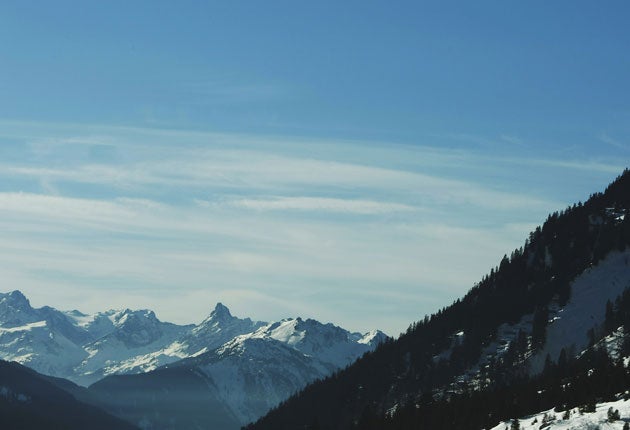Melting snow prompts border change between Switzerland and Italy

Global warming is dissolving the Alpine glaciers so rapidly that Italy and Switzerland have decided they must re-draw their national borders to take account of the new realities.
The border has been fixed since 1861, when Italy became a unified state. But for the past century the surface area of the “cryosphere”, the zone of glaciers, permanent snow cover and permafrost, has been shrinking steadily, with dramatic acceleration in the past five years. This is the area over which the national frontier passes and the two countries have now agreed to have their experts sit down together and hash out where it ought to run now.
Daniel Gutknecht, responsible for the co-ordination of national borders at Switzerland’s Office of Topography, said “the border is moving because of the warmer climate”, among other reasons.
In Italy, the change in frontier requires that parliament approve a new law before it can happen. Franco Narducci, an opposition member of the foreign affairs committee, is preparing the bill to be put to MPs. The draft law has already been endorsed by the Foreign Minister, Franco Frattini, and is expected to become law before the end of next month. In Switzerland no new law is required to make the changes.
The zones affected include areas around the Matterhorn, the 4,478-metre-high mountain known in Italy as il Cervino. The frontier will have to be shifted between a few metres and a hundred metres, but there will be no impact on border communities as the frontier, which is more than 4,000 metres above sea level, is well above any human habitation.
The new border will address changes that have been noticeable for at least 20 years, according to Luca Mercalli, a well-known Italian metereologist and climatologist. “But the melting of the glaciers has been accelerating since the very hot summer of 2003,” he said. “That heatwave caused a lot of changes in the landscape, and many landslides resulted from the melting of the permafrost. For the first time ever the zero-degree altitude went higher than 4,000 metres, and the morphology of many parts of the mountains began to change.”
Mr Mercalli says it is not only glaciers but other points of reference used in delimiting the border that have changed their position under the impact of global warming. “In places the conventional border fixed in 1861 followed water courses, and where glaciers have melted these may have changed significantly,” he said.
The decision to redraw the border is a dramatic reminder of how seriously mountains are affected by climate change, he added. “The mountains are particularly sensitive to change. And they are also areas that teach us a lot: effects of climate change that you don’t notice in the cities are vividly apparent in the mountains. Increased incidence of mud and rock slides, caused when soft ground previously covered by permafrost is exposed to rain, is only the most dramatic consequence.”
The redrawing of the borders brings together the geological and geographical experts of two countries which have adopted drastically different approaches to global warming. In Switzerland the government has been fully aware of the problem for years, and is actively engaged in reducing atmospheric pollution and energy use to minimise human impact on the atmosphere. In Italy, on the other hand, scepticism prevails. The Berlusconi government threatened to veto the EU Energy and Climate Package last October, and Italy is among the worst-performing states in the Climate Change Performance Index.
Join our commenting forum
Join thought-provoking conversations, follow other Independent readers and see their replies
Comments
Bookmark popover
Removed from bookmarks